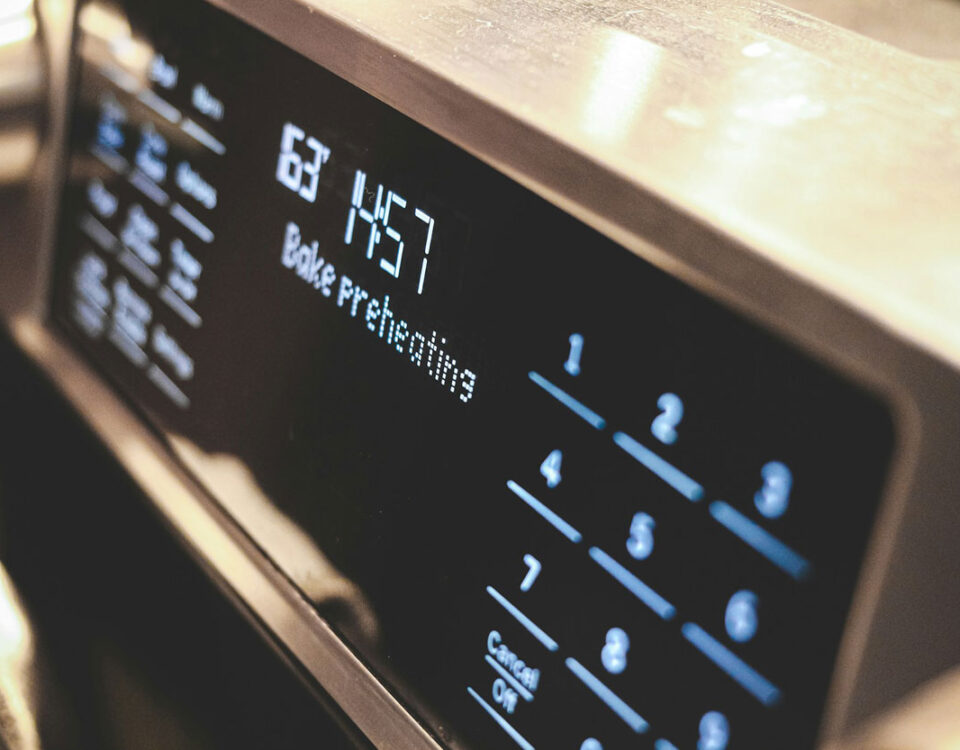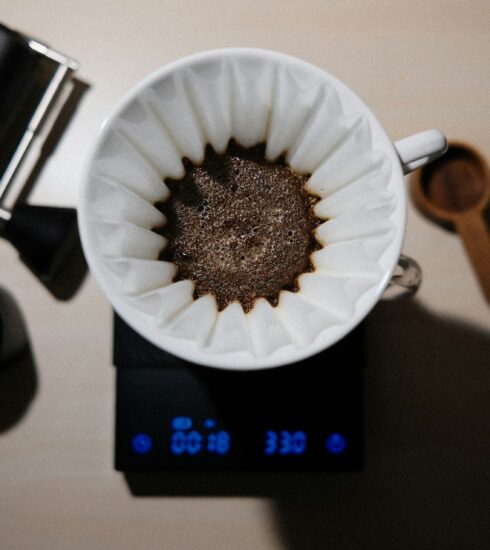Are Smart Home Cooking Devices Actually Saving You Energy, or Just Complicating Your Life?
Key Takeaways
- Smart home cooking devices that save energy use AI, sensors, and connectivity to optimize how you cook.
- They reduce energy waste by adjusting temperatures automatically, switching off when food is done, and tracking cooking habits.
- These systems are part of the larger smart home trend—if your lights and thermostat are connected, your stove probably will be next.
- They can help you eat healthier, save time, and even reduce your grocery bill by managing food waste.
- But, not all “smart” appliances are actually smart—and not all save energy. We explain how to tell the difference.
- In 2025, market growth is huge—but smart doesn’t mean better for everyone.
- This guide covers what features matter, how these devices work, and how to avoid buying tech you don’t need.
This post contains affiliate links. If you purchase through these links, I may earn a small commission at no additional cost to you. Your support helps keep this site running—thank you!
What Are Intelligent Cooking Systems, and Why Are People Talking About Them?
Let’s just get straight to it—what in the world is an intelligent cooking system anyways? You’ve probably seen the term floating around on kitchen sites or when you were looking at new ovens online, but the definition feels… a little vague.
Smart ovens. AI-powered cooktops. Fridges that send you texts. It all sounds a bit like something out of a cartoon or a sci-fi flick.
But here’s the deal:
An intelligent cooking system is just a group of appliances that use tech—AI, sensors, Wi-Fi, sometimes even cameras—to make cooking easier, faster, more efficient, and more accurate. Think of it like a robotic chef that lives inside your oven, except it never gets tired or burns your food.
Here’s what usually makes them different from regular stuff:
- They learn your cooking habits. If you always bake chicken at 400°F for 30 minutes, the oven will just do that for you next time.
- They’re connected to apps. Preheat your oven from your phone while stuck in traffic. Or don’t. It’s optional.
- They optimize energy use. Not by magic—by doing things like reducing preheat time, regulating temp precisely, or turning off automatically when food’s done.
Now, people are either really into it, or very skeptical. Some homeowners love how techy and efficient it feels. Others worry that it’s just another expensive thing that’ll break in two years.
You might be thinking: Do I really need a Wi-Fi-enabled pressure cooker? Fair. And the answer? Not always.
But if you’re building a smart home or looking to reduce your energy bills and cook more at home, then smart home cooking devices that save energy are a decent place to start.
They’re not magic. But they are getting better—fast.
Key Features of Smart Home Cooking Devices That Save Energy
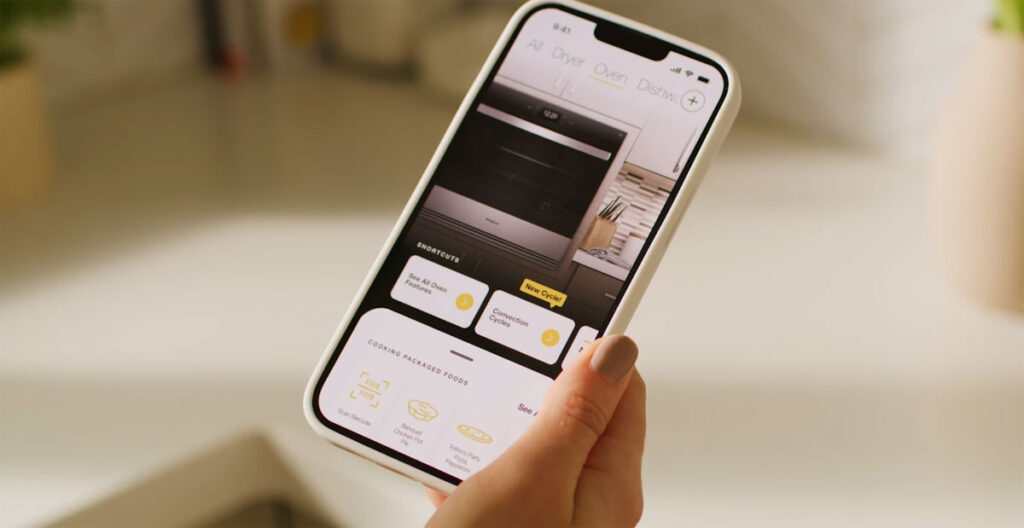
Not all smart cooking devices are made equal. Some are genuinely helpful. Others are just… annoying. So how do you tell the difference?
Here’s the stuff that actually matters.
AI That Learns What You Like (And Actually Uses It)
AI in the kitchen isn’t new. But in 2025, it’s gotten way more accurate—and way more helpful.
Real AI in a smart cooking device doesn’t just show you recipes. It learns:
- What you cook often
- How long you usually cook it
- What level of doneness you prefer
- What ingredients you have in the fridge
- What dietary stuff you’re avoiding (gluten, salt, meat, etc.)
Example? Let’s say you always roast salmon at 425°F. Your oven starts suggesting it as a one-tap shortcut when it notices a salmon fillet’s been scanned by your fridge’s camera. Kinda different? Yeah. Super convenient? Also yeah.
AI also means better cooking results with less energy waste:
- Oven doesn’t overheat
- Cook times adjust dynamically if food’s thawed or frozen
- Auto-shutoff means no more “oops I left the oven on all night”
You don’t have to be techy to use it either. Most of it runs quietly in the background.
IoT Connectivity (A Fancy Way of Saying Everything Talks to Everything)
This is where stuff gets interesting—and sometimes annoying. IoT means “Internet of Things,” and it just means your devices talk to each other through the internet.
Why does that matter?
Well, imagine this:
- You’re coming home late. You say “preheat oven to 375” in your car.
- Oven turns on. Lights adjust. Your kitchen fan preps to kick in.
- You walk in and start cooking immediately. No waiting around.
Pretty slick. But here’s the practical part—remote control lets you save energy by:
- Avoiding unnecessary preheating
- Turning off forgotten devices from anywhere
- Getting alerts if something’s overheating or running too long
Also, a lot of smart apps let you track exactly how much energy you’re using while cooking. Which is kinda wild if you’ve never paid attention before.
Advanced Sensors (Like Having 10 Thermometers in One Pan)
This is the ‘secret sauce’ behind why smart cooking gear works so well. Sensors.
These aren’t the lame heat coils of your old toaster oven. We’re talking:
- Infrared sensors that monitor surface temps
- Humidity sensors that adjust bake times if the air’s too dry
- Weight sensors that detect how full your pot is
- Visual sensors (on some high-end models) that literally “watch” your food cook
It sounds like overkill, but honestly? It works. The result is food that’s cooked evenly, quickly, and without using extra energy just to be “safe.”
In traditional ovens, energy use fluctuates a ton. Smart devices tighten that up by regulating heat second-by-second. That’s not just cool—it’s also efficient.
Quick Recap Table
| Feature | What It Does | How It Saves Energy |
| AI Personalization | Learns habits and adjusts cooking | Prevents overheating, overcooking |
| IoT Connectivity | Links devices + remote control | Turns off unused devices, avoids waste |
| Advanced Sensors | Monitors everything in real-time | Precise temp = less overuse of energy |
Smart Home Cooking Devices That Save Energy: Real Benefits for Homeowners
So you’re staring down a smart oven, wondering if it’s worth the extra $400. It talks. It blinks. It connects to Wi-Fi. But what does it really do for you?
Turns out, a lot. And not all of it’s about convenience. A big chunk of the value lies in efficiency—time, money, and energy saved. Here’s how it actually shows up in your life.
Less Time Wasted Waiting Around
Cooking used to be a full-contact sport. Prep. Wait. Watch. Stir. Watch more. Burn stuff. Order takeout.
Smart devices are turning that on its head. You can now:
- Start preheating your oven while stuck in traffic
- Get a ping when your pasta’s 30 seconds from boiling
- Let a smart pressure cooker automatically know what you’re cooking (and how long it should take)
You’re not chained to the kitchen. That doesn’t sound revolutionary until you’ve done three things at once while dinner cooked itself.
And the energy savings? Actually real. No wasted heat from over-preheating. No running appliances “just in case.” Less cooking time = lower electricity use, which tranlsates to paying less on that power bill!
Healthier Food Without Having to Try That Hard
This part surprised people. A lot of folks assume smart cooking just means fancier versions of the same greasy stuff.
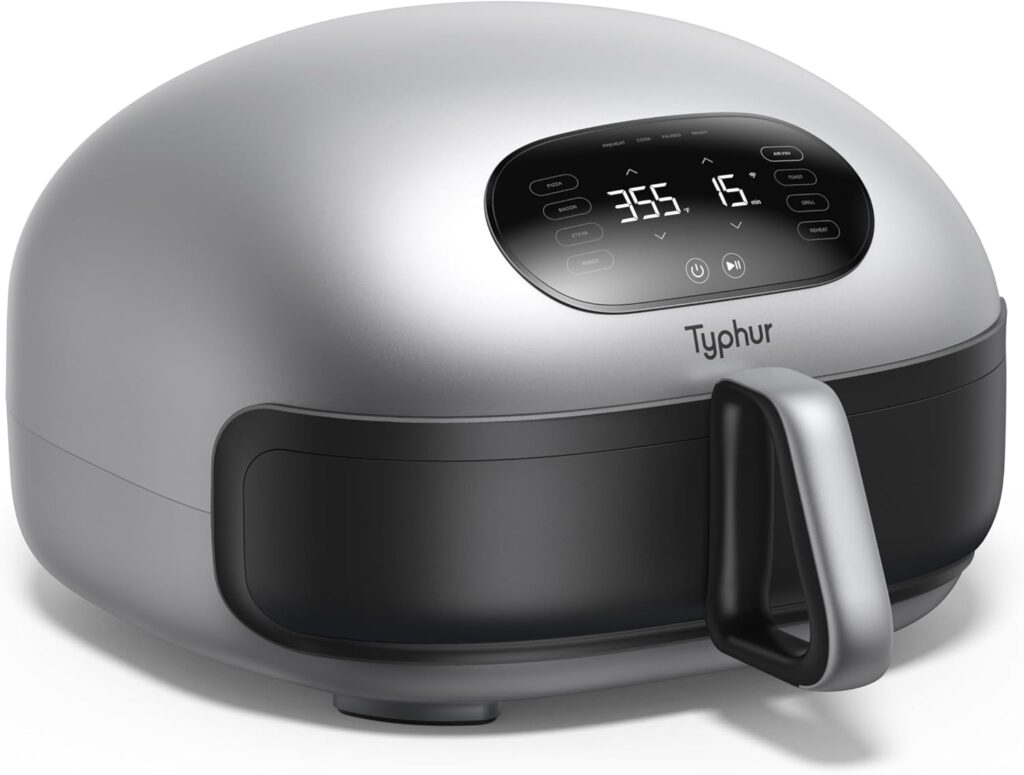
But many smart kitchen tools are built to support better eating habits without turning you into a nutritionist. For example:
- Air fryers use 75% less oil than traditional fryers
- Apps track your macros and suggest meal tweaks
- Smart scales measure portions down to the gram
- Fridges suggest recipes based on what’s about to expire
Basically, it makes it harder to mess up. Not impossible. Just harder.
There’s less guesswork. Less “oh well, frozen pizza again.” And the time-saving aspect means you’re more likely to actually cook something instead of nuking leftovers.
Energy Savings That Add Up—Even if You Don’t Notice at First
Let’s get into the numbers. According to the data, smart kitchen devices can cut energy use by 10% to 20% compared to traditional appliances.
That might sound small. But:
- If you cook 5 times a week
- And your stove/oven use costs you $25–$40/month
- That’s $60–$100 saved per year
- Across a few devices? Easily double that
How do they actually save energy? Simple stuff:
- Auto shutoff after cooking is done
- No standby mode draining power all night
- Real-time adjustments to temp so you don’t overcook
- Cooking multiple dishes together in one go, more efficiently
And then there’s food waste. Fridges that scan and log your food inventory remind you what’s about to go bad—and recommend meals around it. That alone saves families $300–$600 a year depending on how chaotic your leftovers situation is.
Benefits
Here’s the short version of why smart home cooking devices that save energy actually matter:
| Benefit | What It Means for You |
| Less time cooking | You get your evenings back |
| Healthier meals | Without needing a degree in nutrition |
| Real energy savings | Lower bills, smaller footprint |
| Reduced food waste | More efficient use of groceries |
| No babysitting appliances | More mental bandwidth for everything else |
The Future of Cooking: Where Are Intelligent Kitchens Headed?
AR Recipes Projected Right on Your Countertop
Imagine this: you lay down a cutting board, and your countertop lights up with recipe steps, timers, and safety warnings. No phones. No sticky cookbooks. Just step-by-step visuals right where you need them.
This is being tested in high-end concept kitchens, but we’re expecting rollout to start in select consumer models by 2026. Think of it like having a cooking coach, but it lives inside your kitchen surface.
Why it matters:
- No need to touch screens with messy hands
- Steps update automatically as you progress
- You don’t need to remember anything—just follow the light
Big bonus: the AR overlay can also show you how much power you’re using in real-time. That makes smart home cooking devices that save energy even smarter, because now you see what’s happening as it happens.
Food Recognition That’s Actually Useful
A few high-end fridges and smart ovens now include cameras that identify food.
Here’s how it works:
- Fridge scans your groceries as you put them in
- It logs expiration dates based on item and package scan
- Your oven then suggests recipes based on what’s in the fridge
So now, instead of Googling “what to make with one egg, mustard, and a soft zucchini,” your system just tells you.
It’s not perfect—yet. But when it works, it’s a time and energy saver. You waste less food, make fewer pointless grocery trips, and don’t leave the fridge open while thinking for 10 minutes.
3D Food Printing (Yes, That’s a Real Thing)
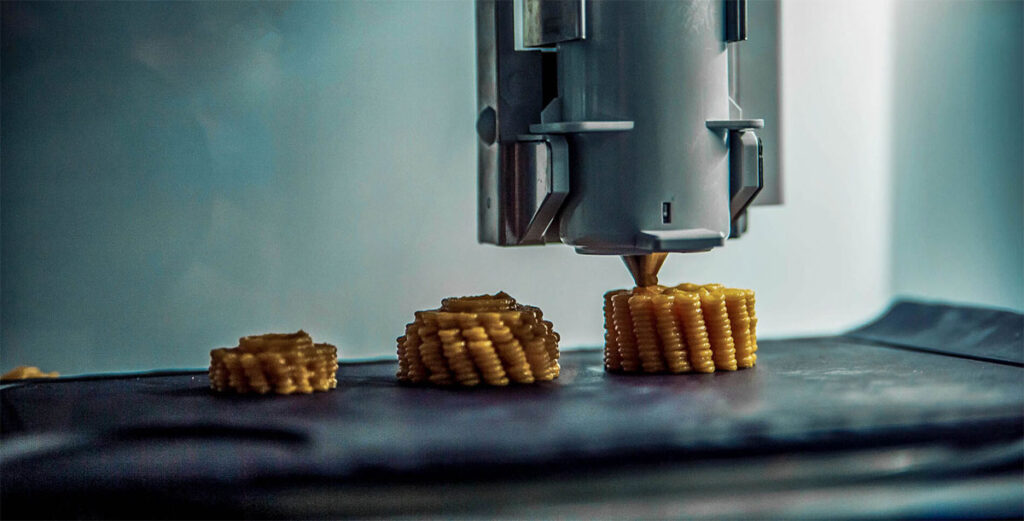
Yep, like something from an episode of Star Trek. But it’s real, and it’s evolving.
Some companies are already printing:
- Plant-based meats
- Pasta shapes
- Customized desserts
- High-protein bars for athletes
Will this replace normal cooking? No. But for people with dietary restrictions, elderly folks who need soft food, or even just picky kids—it’s a game-changer.
You preload the ingredients (which are just purées), and the printer builds the food in shapes, patterns, or textures that you want. Super niche? For now. But remember how people used to laugh at the idea of an air fryer?
Smarter Sustainability Tools
We’ve mentioned energy savings. But there’s a bigger picture too—how smart kitchens help cut waste across the board.
Some upcoming features that experts are watching:
- Blockchain-backed food tracing — know exactly where ingredients came from
- Compost sensors — track what food is tossed and suggest changes
- Inventory sync with online shopping — buy only what you’ll actually use
- Eco cooking modes — uses the least power possible while still cooking correctly
These aren’t buzzwords for marketing. They’re already in use in test homes, and they work. Early data shows homes using this tech cut kitchen waste by 30–40%. That’s massive.
A Quick Look at What’s Next
| Feature | What It Does | When We’ll Likely See It |
| AR recipe projection | Step-by-step visuals on your counter | 2026–2027 |
| Food recognition | Auto recipe suggestions + inventory | Already in beta |
| 3D food printing | Customized food textures/shapes | Expanding now |
| Sustainability tools | Waste reduction and energy optimization | Growing fast in smart homes |
So yes—it’s not just about having a fridge that talks to your phone anymore. The future of smart home cooking is about doing more with less, saving energy without thinking about it, and using tech to make food easier, healthier, and a lot less wasteful.
And that’s just the beginning.
Because behind all the flashy product videos and Wi-Fi-connected toasters, there’s a huge shift happening. One that’s being driven by homeowners just like you who are ready to move on from old-school appliances, high energy bills, and food going to waste.
Market Growth and Consumer Demand
Smart home cooking devices that save energy aren’t just a trend. They’re turning into the new standard.
In 2025, the smart kitchen appliance market is valued at around $29.77 billion. By 2029, it’s projected to hit $57.04 billion. That’s almost doubling in just four years—with a compound annual growth rate of 17.7%. That’s not slow and steady. That’s rocket fuel.
So what’s actually pushing this growth?
Smart Homes Are Going Mainstream—Fast
A few years ago, if you said your fridge could text you, people would laugh. Now? It’s weird if your appliances don’t connect to an app.
Smart homes used to be for tech nerds or the very wealthy. Now?
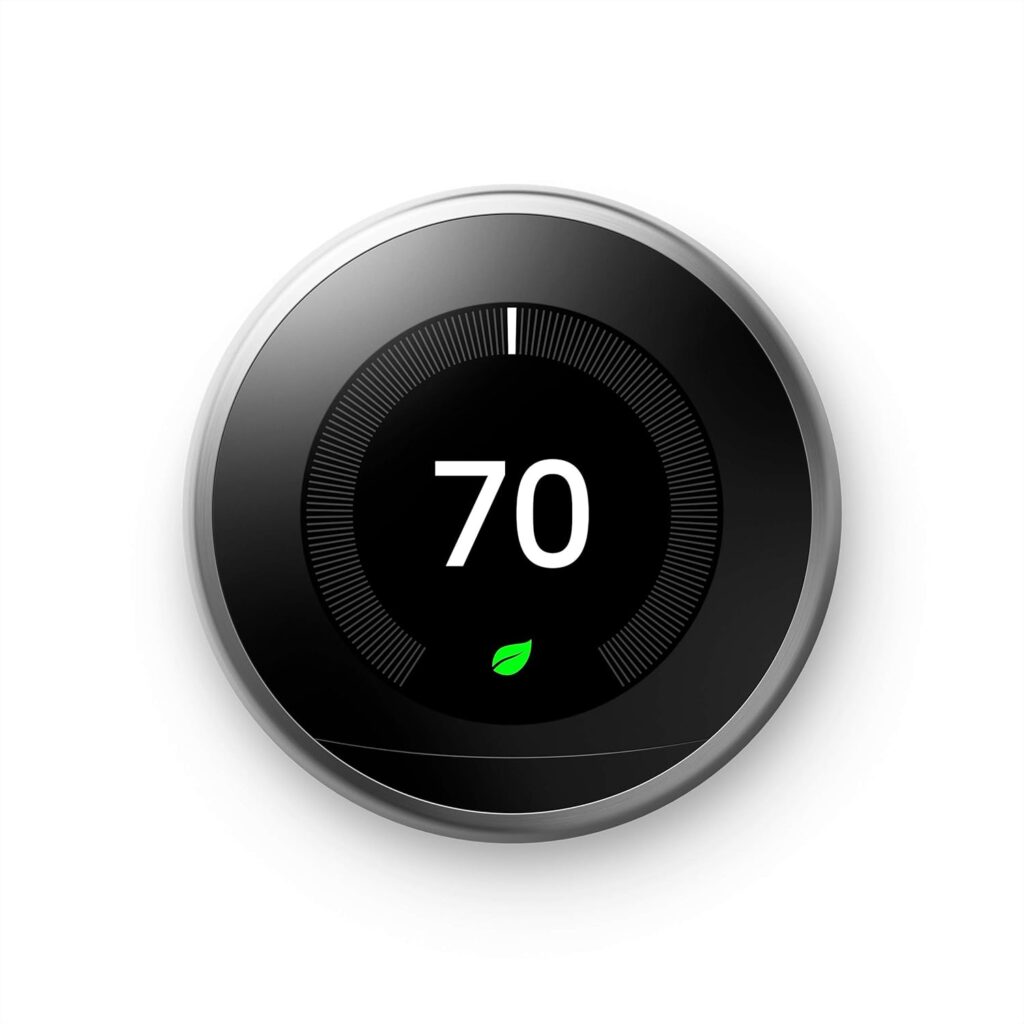
Adding smart cooking tech is just the next step.
Most new builds in urban and suburban areas already come pre-wired for this stuff. So even if you don’t think you’re living in a smart home, you’re probably halfway there.
People Want Energy Efficiency—But Without Doing the Math
Ask around: nearly everyone says they care about saving energy and lower power bills. But most folks don’t want to spend hours figuring out how to do it.
Smart appliances bridge that gap:
- They make the adjustments for you
- They give you usage reports (if you care to check)
- They blend into daily life with no extra work
This is what makes the idea stick—it’s energy savings without any of the guilt-tripping or complicated setups. You just cook. It just works smarter.
Urbanization = Smaller Kitchens = Smarter Devices
Kitchens are shrinking. Especially in cities.
That means multi-functional devices are in high demand—think one appliance that air fries, bakes, broils, and steams, all in one box. But to do that efficiently, it has to be smart.
And smaller kitchens are often part of homes with higher energy costs (think apartments with older grid connections), so devices that optimize electricity usage are even more valuable.
Buyers Actually Care About This Stuff Now
Here’s something real estate agents are saying more often: smart kitchens sell homes.
Not because people want flashy gadgets, but because:
- They associate smart devices with newer, safer homes
- Energy-efficient homes are seen as more “budget-friendly”
- Younger buyers want tech-enabled living
One study in 2024 found that listings with “smart kitchen” in the description got 14% more views than similar ones without it. That’s not a small bump.
Market Growth Snapshot
| Metric | Value |
| Market Size (2025) | $29.77 billion |
| Projected (2029) | $57.04 billion |
| CAGR | 17.7% |
| Top Demand Drivers | Smart home integration, energy efficiency, compact living |
Bottom line? These devices aren’t going away. If anything, the next wave of innovation is going to make them more affordable, more compatible with solar homes, and even more hands-off.
Let’s get practical. It’s one thing to see all the shiny tech and read about how fast the market’s growing. But when it comes down to it, you’re probably wondering one thing:
Is it actually worth the money to upgrade?
Let’s break that down in real terms—just the stuff you’d actually weigh if you were buying one of these tomorrow.
Is It Worth It? What to Consider Before Upgrading Your Kitchen
Smart home cooking devices that save energy can save you money, time, and hassle—but that doesn’t mean they’re always the right move for every person or every kitchen.
So here’s the unfiltered version of what you should think about before spending a dime.
What Do You Actually Cook? (Be Honest)
If you eat out four nights a week, reheat leftovers the rest of the time, and haven’t turned your oven on in a month… a smart range probably isn’t going to change your life.
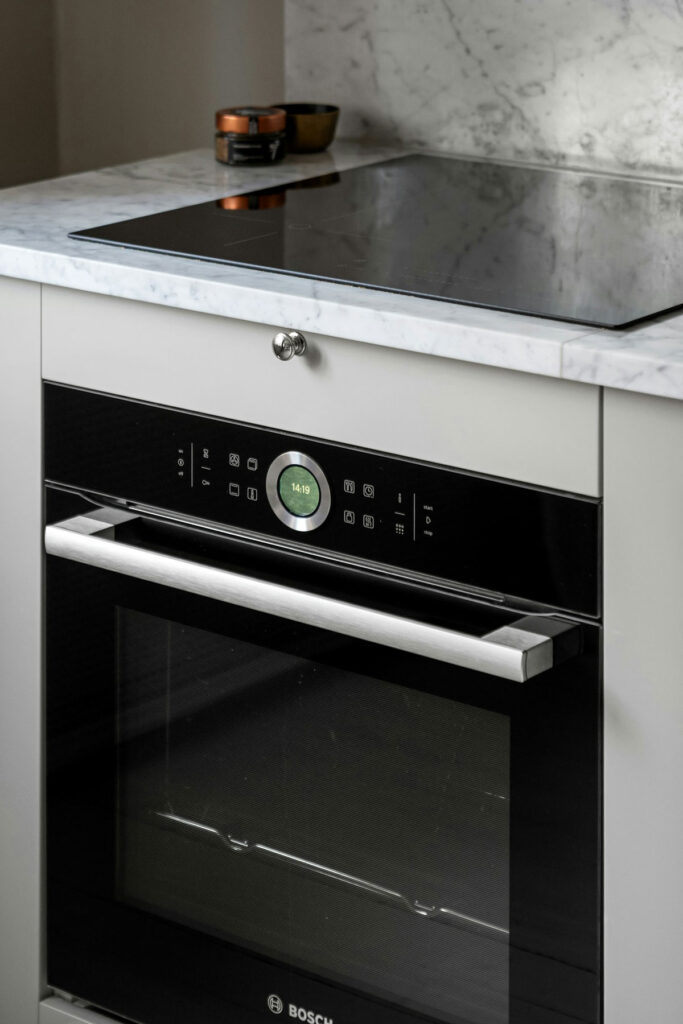
But if you:
- Cook at least 3–4 meals a week at home
- Use multiple appliances during meal prep
- Hate how long things take or how unevenly they cook
- Want to waste less food or save on bills
…then you’ll probably get more out of this tech than most.
And you don’t have to go all-in. Sometimes starting with one device—like a smart pressure cooker or air fryer—is enough to see if it fits your lifestyle.
Upfront Cost vs. Long-Term Payback
Here’s where a lot of people get stuck.
Smart appliances cost more. Period. A regular oven might cost $800. A smart one? Easily $1,300+.
So the real question is: does that extra $500–$800 pay off?
Let’s do some rough math:
- Energy savings: $80–$120/year
- Food waste savings: $200–$400/year (if you’re cooking more at home and throwing away less)
- Time savings: hard to measure in dollars, but huge in day-to-day sanity
So yes—it could “pay for itself” in 2–3 years. But only if you actually use it the way it’s meant to be used.
Is Your Kitchen Smart-Ready?
This one gets overlooked a lot.
Some smart devices need:
- Wi-Fi (obviously)
- 2.4 GHz vs. 5 GHz router compatibility
- A smart hub like Google Home, Alexa, or Apple Home
- Dedicated apps (some are better than others)
- Firmware updates (yes, like your phone)
If your Wi-Fi is spotty, or your home setup isn’t compatible, some of the “smart” features might just not work at all. That doesn’t mean the appliance is broken—it just means your home isn’t set up for it.
Always check compatibility before buying. Or get help from someone who knows smart home stuff (some stores offer setup services now, FYI).
What Features Actually Matter to You?
Ignore the gimmicks. You probably don’t need:
- Mood lighting inside your fridge
- A microwave that plays music
- A stove that texts you bad jokes
Look for these features instead:
- Auto shut-off
- Smart temperature control
- Cooking sensors
- App-based control
- Inventory management (for fridges)
You want features that work in the background to save you energy—not ones that just flash lights and eat bandwidth.
Real Talk: Should You Upgrade?
| Situation | Worth It? |
| You cook daily and want better results | Yes |
| You live alone and reheat most meals | Probably not |
| You care about food waste + energy bills | Yes |
| Your kitchen has spotty Wi-Fi | Not yet |
| You just want cool gadgets | Be careful—it adds up |
Sometimes the smartest move is to start small—get one connected appliance, use it for 3 months, and see if it actually helps.
If it does? Go bigger.
If not? You saved yourself $2,000 on stuff you weren’t gonna use anyway.
Final Thoughts: A Smarter, Greener, Tastier Future
Most of us don’t care about tech for the sake of tech. We care about does this make my life easier, cheaper, or better in some way.
Smart home cooking devices that save energy are starting to check all those boxes.
But—only when they’re designed well. And only when they’re doing things you actually care about.
What’s Changed Already
Let’s recap what’s already here and real:
- Appliances that cook better and faster, using less power
- Sensors that make decisions for you, so you don’t burn dinner again
- Apps that let you control everything remotely, and check what’s in your fridge without opening it
- Ovens that shut themselves off before they waste heat (or cause a fire)
- Devices that help reduce food waste by tracking ingredients and expiration dates
These aren’t concepts. They’re features in real products—on shelves now. And they’re making an actual dent in energy use and food waste for people who cook often.
What’s Coming Next
The future’s not as far off as it sounds. Here’s what’s close:
- AR projections guiding your cooking hands-free
- 3D printing for custom food textures—super useful for people with health needs
- AI that gets way more personal—suggesting recipes based on your actual mood, diet, and leftovers
- Full-on sustainability tools that adjust how you cook based on your carbon footprint or solar power levels
And it’s not going to be just for early adopters. Prices are already coming down. Integration is getting easier. And the days of needing a 12-step setup just to turn on your smart oven are almost over.
The Real Win? You Don’t Have to Think About It
That’s the point. Smart cooking tech isn’t supposed to be one more thing to manage. It’s supposed to remove friction:
- No second-guessing cooking times
- No wasting energy heating empty ovens
- No standing over the stove while juggling three other things
It fades into the background and just… works. That’s what makes it different. And honestly? That’s what makes it worth considering—especially if you’re already trying to reduce waste, save money, or just make dinner without stress.
Final Recap Table
| Category | Smart Cooking Benefit |
| Time | Less waiting, more automation |
| Health | Encourages more cooking, better habits |
| Energy | Lower power usage, better control |
| Waste | Less spoiled food, smarter shopping |
| Usability | App control, voice support, hands-free recipes |
Want to go smart? Start small. Pick one smart appliance that solves a real problem for you—maybe an oven that doesn’t overcook or a fridge that helps plan meals.
You don’t need a full kitchen overhaul. You just need something that works better than what you’ve got now. If it also saves energy along the way? That’s just smart.
FAQ: Smart Home Cooking Devices That Save Energy
Do smart kitchen appliances really save energy? Or is that just marketing?
They do. But not all of them. The ones that matter have:
- Auto shut-off
- Precise temperature control
- Smart scheduling or preheat options
- Sensors that reduce overcooking
If it doesn’t have those features, it’s probably not saving much energy—no matter what the box says.
Will these appliances work if my Wi-Fi goes down?
Yes. Mostly.
Most smart devices still function as normal appliances without Wi-Fi. You just lose the remote control and app features until your connection comes back. You can still cook dinner. You just won’t get the ping when it’s done.
What happens if there’s a software update or a glitch?
Two things can happen:
- Nothing—you don’t notice.
- Something annoying—like the app won’t connect until you update it.
Most appliances are built to work offline, so cooking still works even if the “smart” part temporarily doesn’t. But if you’re not into tech at all, some of the troubleshooting might annoy you.
Is this stuff only useful for big families or people who cook a lot?
Nope. In fact, single folks or couples can benefit more in some ways:
- Less food waste
- Better portion control
- Less time spent babysitting meals
That said, if you rarely use your kitchen, you probably won’t get much return on investment.
How long do smart appliances last? Will I be replacing them in 2 years?
Good ones last 8–10 years—same as traditional appliances.
The smart features (apps, Wi-Fi, updates) might need occasional reconfiguring or app refreshes. But the physical appliance? It’s built to last like any other.
Just avoid the no-name brands that launched last week. Stick with reliable names that offer long-term firmware support.
Can I make my current appliances “smart” instead of replacing them?
Sometimes, yes.
There are smart plugs and accessories that add basic functionality to dumb appliances. For example:
- Smart plug that cuts power when not in use
- Smart thermometer that alerts your phone
- Add-on sensors for cooking pans or fridge temp
It won’t be the same as a full upgrade, but it’s a solid first step if you’re on a budget.
Do smart cooking devices spy on me? Are they a privacy risk?
It depends on the device. Some collect usage data to improve cooking suggestions. Others don’t collect anything unless you sync them to an app.
Read the privacy policy. Look for the ability to opt out. And maybe skip devices with built-in cameras if that bugs you.
Is there any financial help or rebates for buying energy-saving smart appliances?
Yep. Depending on where you live:
- Some utility companies offer rebates for Energy Star-rated smart ovens or fridges.
- You might qualify for tax credits under energy efficiency programs.
- Check local and federal programs before you buy—sometimes you can get back $50 to $300.

